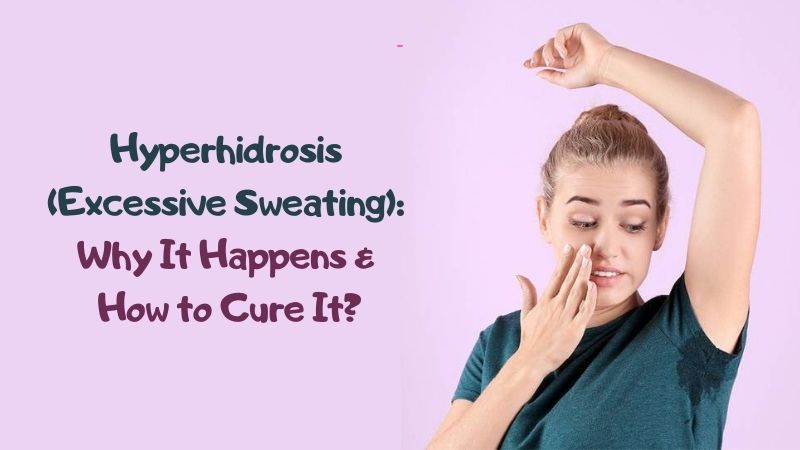
Excessive sweating, or hyperhidrosis, is a pathological condition of the body in which the sweat glands produce more secretions than normal.
The following parts of your body usually sweat the most:
Hyperhidrosis can be divided into:
Only a specialist can correctly determine the type of hyperhidrosis after examination and passing the appropriate tests.
It is very easy to detect excessive sweating. It is accompanied by the following symptoms:
Its main danger is that a person experiences psychological problems, begins to avoid a large crowd of people, begins to neglect active rest or sports, avoids meeting friends, etc. Thus, hyperhidrosis significantly impairs the quality of life and that is why it must be treated.
Sweaty palms are the most significant form of hyperhidrosis, which causes numerous problems in the social, emotional and professional spheres and can lead to serious personal consequences.
With severe palmar hyperhidrosis, everything that the patient touches becomes wet, so at school, such children cannot write with ink pens, their notebooks and textbooks become wet, which causes misunderstanding of teachers and classmates. Since childhood, such people try to avoid shaking hands, touching, dancing, they cannot engage in some sports in which it is required to hold something in their hands – tennis, volleyball, shooting. They have difficulty playing musical instruments (piano, violin, guitar).
Later, sweaty hands also lead to numerous restrictions – it is difficult to work with papers, precision mechanics, watches, electrical engineering and electronics, jewelry and optics, as well as work with people that requires handshaking and touching (masseur, hairdresser).
Palmar hyperhidrosis can be isolated, but more often it is combined with plantar hyperhidrosis (foot), axillary, or with both of the above forms at once.
With this form of increased sweating, the problem can be hidden from others, but this does not make it less significant for the patient. It is usually associated with palmar hyperhidrosis.
The persistent problems faced by patients with severe plantar hyperhidrosis are:
Constantly wet feet, combined with the need to wear closed shoes in any circumstances, even in hot weather, often leads to maceration (swelling and softening) and secondary skin lesions such as corns, bacterial or fungal skin lesions. This, in turn, can contribute to an intense odor.
This form does not occur in children before puberty since its occurrence is associated with increased hormonal activity. It can be combined with palmar or palmar-foot hyperhidrosis.
It should be noted that such hyperhidrosis should not include mild forms of increased armpit sweating, especially in the summer period, or minimal sweating. Dr Baumgartner refers to axillary hyperhidrosis those forms of excessive sweating in which standard cosmetic products do not help, and social maladjustment occurs due to a significant amount of sweat visible on the skin and clothes. Such patients avoid wearing white and colored clothes, cannot follow the dress code (flight attendants, waiters, office workers), are forced to resort to various tricks (for example, placing toilet paper or sanitary napkins in the armpits). An additional inconvenience is the addition of odor and its rapid spread as a result of sweat evaporation.
This form of hyperhidrosis is excessive sweating of the face and scalp. It can be combined with the above forms, but quite often it is isolated. However, typical symptoms can occur during adolescence.
Excessive sweating occurs at a more mature age, in women – during menopause.
Facial sweating may be limited to the forehead and upper lip, but in extreme cases, excessive sweating occurs over the entire face in combination with the scalp.
Isolated sweating of the scalp (cranial hyperhidrosis) rarely has signs of primary since it is not characterized by a connection with excitement, as well as the presence of sweat at night and during sleep.
Pronounced craniofacial hyperhidrosis can create serious social problems, especially when it is necessary to publicly speak, communicate with people. In addition, it is often combined with stressful facial redness (blushing syndrome or erythrophobia). This combination is called flushing syndrome.
Excessive sweating of a rather delicate part of the body rarely leads to significant manifestations due to the possibility of “hiding” the problem. This is probably why doctors do not know the true frequency of such hyperhidrosis. Only pronounced manifestations – the constant risk of getting the trousers wet in the buttocks and perineum – force such patients to seek medical help.
In practice, this form is more often isolated, or combined with axillary hyperhidrosis, which seems natural given the similarity of the anatomical significance of these zones.
The exact mechanism of the influence of somatic, endocrinological and psychological disorders on the sympathetic nervous system is unknown. Scientists cannot explain how the process of active work of the sympathetic nervous system is triggered. Accordingly, it is not possible to regulate the centers of the brain that control nerve fibers that transmit signals to the sweat glands. Treatment of hyperhidrosis is carried out with methods and drugs that lower the intensity of the sweat glands.
Treatment methods are exclusively symptomatic – they relieve sweating but do not affect the cause of the disease. If this sweating is secondary, then the technique to reduce sweating is carried out together with the treatment of the pathology that caused the problem.
Treatment of sweaty palms and feet is carried out by the following methods:
The presented methods are used according to a specific algorithm to achieve the desired result.
These products are applied to the skin and contain aluminum salts, which clog the sweat glands. As a result, sweat production is blocked and sweating is reduced. Antiperspirants can be used for a long period of time until the optimal effect is obtained. Before the use of aluminum, the preparations contained formaldehyde or urotropine, their use was limited due to toxicity and low efficiency.
When choosing an antiperspirant, you should take into account the concentration of the active substance – aluminum. It is better to start a hyperhidrosis cure with a minimum concentration (from 6.5 to 12%). The drug is applied to the affected skin for 6-10 hours, preferably at night, then washed off. The interval of use is from 1 to 3 days, depending on the duration of the action.
In case of insufficient effectiveness of antiperspirants, an iontophoresis procedure is performed – under the influence of an electric field, drugs and salts are introduced into the skin, which reduces the activity of the sweat glands. These injections help 80% of the time.
Cupping with botulinum toxin is performed when iontophoresis does not bring the desired result. The therapeutic effect of the procedure lasts from six months to one and a half years.
Pills are rarely used for sweaty palms cure since their use is associated with side effects – heart palpitations, dry mouth, problems with urination, etc. The active ingredient in the drug may be glycopyrrolate, oxybutynin and clonidine. Usually, drugs are used in situations where short-term but reliable results are needed.
During surgery, the sweat glands in the problem area are completely removed, and the nerves leading to the site of profuse sweating are destroyed or cut.
Curettage is cleansing the sweat glands from the problem area with a curette (surgical spoon). The procedure is performed under local or general anesthesia and helps in more than half of the cases. But it is possible that secondary curettage may be needed.
Laser lipolysis is the destruction of sweat glands with a laser, a safe procedure that minimally traumatizes the skin surface.
Sympathectomy is cutting or clamping the nerve leading to the sweat glands. It’s a simple and effective procedure, but it can cause side effects – profuse sweating on the adjacent skin area.
Young children are prone to hyperhidrosis no less than adults. One should bear in mind that the sweating system is only being formed until the age of 6 years. After the sweat glands begin to work stably, they look more like the system of an adult. The baby’s sweat glands begin to function from 3-4 weeks of life, their work is unstable and may inadequately respond to temperature changes. At the age of three, children sweat a lot during sleep and while eating, which is the norm – the body removes excess heat outside, protecting itself from overheating.
The children’s body is well adapted to the temperature conditions of the environment, the temperature of 18-22 degrees is comfortable for walking in a regular T-shirt. An adult at the same temperature can feel the coolness and dress the child according to his feelings. When overheated, the body sweats, compensating for excess clothing.
A large number of natural factors can explain the child’s excessive sweating, but if signs of hyperhidrosis are frequent, you should consult a specialist.
The diagnosis of excessive sweating begins with a visit to a pediatrician and dermatologist. The doctor prescribes a referral for tests – blood (general, sugar level, hormones) and urine. If necessary, the patient is referred to an ultrasound scan, an X-ray, an ECG and an additional consultation of specialists – an endocrinologist, a cardiologist, an infectious disease specialist. The treatment for sweaty palms and feet may also include intake of sedatives, vitamin-mineral complexes and immunomodulators.
Compliance with preventive measures will help avoid or speed up the treatment process, these include:

Sweating is an important function of the body, necessary for thermoregulation and water-salt metabolism. However, in some cases, the sweat glands produce too much secretion – a condition called hyperhidrosis or excessive sweating. Excessive sweating is most noticeable in the armpits. Treatment of hyperhidrosis can be carried out by conservative and surgical methods. In total,…
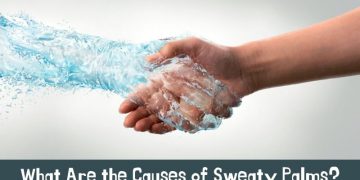
Surely you have at least once experienced the feeling when palms sweat from excitement. If this is a one-time situation, don’t worry. However, what if the problem occurs regularly? It is important to understand why palms are sweating. In this article, we will talk about the causes of this phenomenon and how to get rid…
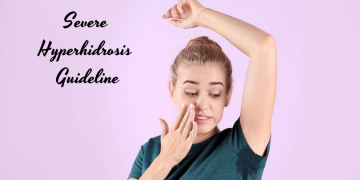
The work of the sweat glands is involved in thermoregulation and is aimed at the sweat production. With the increased functioning of the tubular channels, excess sweat is released, called hyperhidrosis. The pathology is characterized by a general and local form: sweat is secreted throughout the body or in specific areas. The local form is…
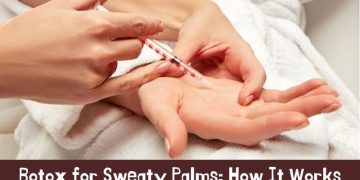
One of the most effective and popular ways to stop palm hyperhidrosis is by injecting Botox. This procedure makes it possible to forget about excessive sweating for a long time. However, one should remember that an integrated approach is needed to resolve the issue. It is impossible to get a lasting positive effect without eliminating…
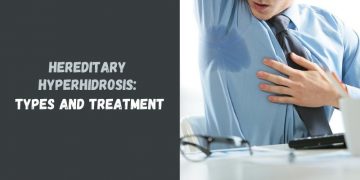
Hereditary hyperhidrosis is excessive sweating, which is transmitted from parents to children or from grandparents to grandchildren. People with excessive sweating are forced to sweat not only in the heat but also in the rain and snow. According to the available statistics, in 50% of cases, a person suffering from excessive sweating not associated with…
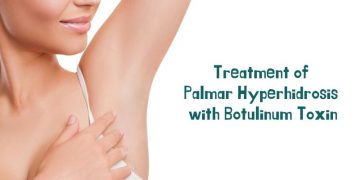
If medical treatment for excessive sweating is not effective, the only way to get rid of hyperhidrosis is to inject Botulinum toxin into the armpits. The effect of the exposure lasts up to 10 months, then the session can be repeated without harm to health. Advantages over other techniques Botulinum toxin is able to eliminate…
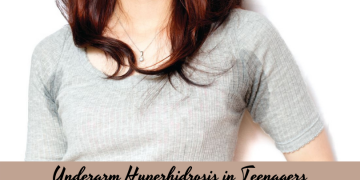
Underarm sweating is common during adolescence, when constant changes in hormone levels affect the sympathetic nervous system that controls the sweat glands. In teenager ages, the endocrine system develops rapidly, so excess sweat production increases several times. If you need some help in overcoming this disease, you are welcome to surf sweathelp.org. Excessive sweating in…
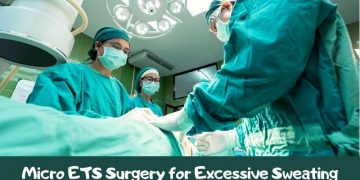
Pathological sweating greatly affects the quality of life of people, provoking regular stress, a feeling of “imperfection”. Today, you can deal with this problem with the help of endoscopic thoracic sympathectomy (ETS). This operation is indicated for pathological sweating (palmar-muscular and facial hyperhidrosis), blushing syndrome (and associated erythrophobia – fear of facial flushing), Raynaud’s disease….
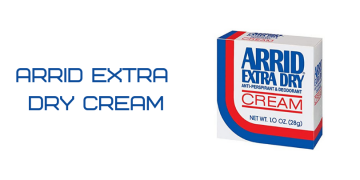
ARRID™ Extra Dry Cream is original antiperspirant deodorant. The unique formula is orianted on smoothing skin. It provides a full 24 hours of strong wetness protection. So you will feel fresh and comfortable all day long. The main ingredient is aluminum sesquichlorohydrate 17% cream. Excipients are Water, Glyceryl Stearate, PEG-40 Stearate, Cetyl Esters, Glycerin, Dimethicone,…
© 2025 www.curesweatypalms.com. All rights reserved.